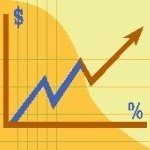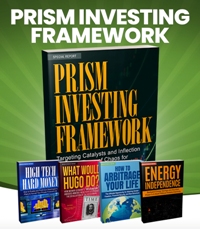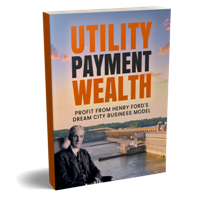 Have you ever heard of Aeva Technologies?
Have you ever heard of Aeva Technologies?
The company is headquartered in the heart of Silicon Valley, in Mountain View, California. It specializes in developing LiDAR sensors for self-driving cars and robotics.
Aeva uses something called frequency-modulated continuous wave (FMCW) technology. This can measure both distance and velocity simultaneously. It is referred to as 4D LiDAR.
We think 4D LiDAR sounds pretty neat. Speculators do too. Over the last 12 months, and even with a recent selloff, Aeva’s share price is up 1,000 percent.
The only problem is Aeva doesn’t make money. It consumes it. Last year the company reported a net loss of $152.26 million. And while Aeva’s revenue is growing, the company is expected to generate negative earnings per share for the fiscal year 2025.
Yet Avena isn’t the only money-burning machine that speculators are piling into. Since hitting a low on April 7, shares of Carvana, the used car vending machine company, are up over 133 percent. Shares of Avis Budget Group are up over 250 percent since March 13. This is a company that reported a net loss of nearly $2 billion in the fourth quarter of 2024.
What’s going on?
Steve Sosnick, chief strategist at Interactive Brokers, recently shared the following observation:
“We’re not yet seeing a full-fledged ‘flight-to-crap,’ but it is clear that the motivation behind many of these stocks’ activity is something other than disciplined considerations of discounted cash flows.”
In other words, this partial ‘flight to crap’ is speculative. Also, it has more room to run before it reaches the full-fledged stage. Thus, the current stock market bubble could turn into a mega bubble before it ultimately collapses.
Moonshots
Stock market bubbles can be a lot of fun. They tease a vision of the future that may or may not ever arrive. They also make reckless risktakers rich.
The self-driving car revolution appears to be turning into a reality more each day. Currently, you can hail a ride in an autonomous, self-driving Waymo vehicle in Phoenix, San Francisco, Los Angeles, Austin, and Atlanta. Services will be added in Washington D.C. and Miami in 2026.
The most exhilarating stock market bubbles form when a promising technology blooms at the same time as an already burgeoning bubble. Aeva has hit the sweet spot of a larger AI bubble and scored a major moonshot.
Perhaps Aeva and its 4D LiDAR will soon capitalize on the advancement of self-driving vehicles and turn its losses into profits. Or maybe the real money will come from applying its technology to things like industrial automation. Who knows?
Visionary speculators who bought Aeva a year ago have 10X’d their money. They’ve already won, regardless of whether Aeva ever becomes a self-sustaining business or if its earnings ever get to a place that supports its share price. They just must remember to sell before the share price crashes back to earth.
The best strategy over the last year for technology speculators has been to buy now and ask questions later. The thinking is that “this new tech will change everything, so it doesn’t matter if the business is losing money.” And this thinking has been right – so far.
Still, history shows these kinds of hype-fueled rallies often end with a crash. In the meantime, there’s a mix of genuine innovation and a whole lot of ‘fear of missing out’ driving prices right now.
There’s also a complete distortion of the overall stock market that’s taking place…
Retirement Investors are Getting Ripped Off
Even with this week’s modest tariff selloff, the stock market, as measured by the S&P 500, is at extreme valuations. The Cyclically Adjusted Price-to-Earnings (CAPE) ratio, which takes the current price of the S&P 500 and divides it by the average of the past ten years of inflation-adjusted earnings, is currently 38.15.
The historical average CAPE ratio for the S&P 500 since 1881 is 17.26. Thus, the S&P 500 is more than twice as expensive as its long-term average. What this means is that retirement investors, who auto-invest their income into an S&P 500 Index fund every two weeks, are getting ripped off.
Moreover, it’s not just the CAPE ratio that’s showing stocks are extremely expensive. The Buffett Indicator, popularized by the Oracle of Omaha himself, is also flashing a warning sign.
Simply put, the Buffett Indicator is the total market capitalization of all publicly traded stocks in a country divided by that country’s Gross Domestic Product (GDP). Think of it as a quick snapshot comparing the stock market’s size to the overall economy’s output.
Warren Buffett once called this “probably the best single measure of where valuations stand at any given moment.” Historically, when this ratio is low (say, in the 70-80 percent range), stocks are undervalued, and it is a good time to buy. Conversely, when it soars, like it did during the dot-com bubble or more recently, it signals the market is expensive.
Currently, the U.S. Buffett Indicator is over 209 percent. This is higher than it has ever been. At this level the stock market is significantly overvalued.
But what if valuations no longer matter?
How Passive Investing Is Inflating a Dangerous Bubble
That’s right, what if traditional stock market valuations, like the CAPE ratio or the Buffett Indicator, are no longer accurate gauges?
One reason we’ve come across points to retirement investors. The thought is that the combination of 401(k) plans and the popularity of passive S&P 500 Index funds are responsible for the stock market’s unstoppable rise.
Here’s the logic…
Every two weeks, like clockwork, millions of Americans have a chunk of their paycheck automatically swept into their 401(k). Their most popular investment, which is often the plan’s default investment option, is an S&P 500 Index fund.
As you know, an S&P 500 Index fund isn’t about picking winners and losers based on their current financial health or future prospects. It’s a passive investment vehicle designed to simply mirror the performance of the S&P 500 Index.
What’s more, the S&P 500 Index is weighted by market capitalization. That means the bigger a company gets, the larger its slice of the S&P 500 pie, and consequently, the more a passive S&P 500 Index fund must buy of that company’s stock. This is why the share prices of magnificent seven stocks like Apple, Microsoft, Amazon, Nvidia, etc., have completely blown out.
Regular, bi-weekly 401(k) contributions flowing into S&P 500 Index funds automatically funnel more money into magnificent seven stocks, further driving up their price. It’s a self-fulfilling prophecy.
The very act of passively investing in these funds, regardless of a company’s underlying fundamentals or a stock’s valuation, creates continuous buying pressure on the largest companies. This has also pushed the overall S&P 500 Index to extreme valuations.
In short, this passive investing phenomenon has created something called ‘valuation indifference.’ This is what’s bringing the relevance of traditional valuation metrics into question.
Here at the Economic Prism, we do not deny that this is going on.
But rather than thinking valuation metrics no longer matter. We think they continue to provide a warning sign that the present stock market bubble has become exceedingly dangerous.
All bubbles eventually pop. Stock market valuations eventually revert back to economic reality.
This is fundamental. And it is being ignored at great peril.
[Editor’s note: Have you ever heard of Henry Ford’s dream city of the South? Chances are you haven’t. That’s why I’ve recently published an important special report called, “Utility Payment Wealth – Profit from Henry Ford’s Dream City Business Model.” If discovering how this little-known aspect of American history can make you rich is of interest to you, then I encourage you to pick up a copy. It will cost you less than a penny.]
Sincerely,
MN Gordon
for Economic Prism
Return from How Passive Investing Is Inflating a Dangerous Bubble to Economic Prism




